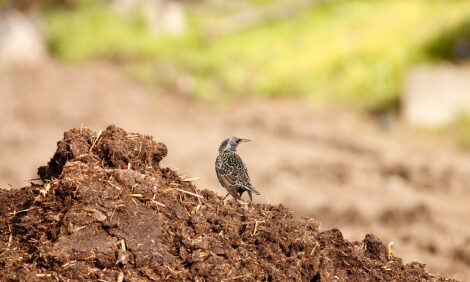



Creation of Bilateral Group for Jobs, Growth
EU - A report from the British National Farmers Union due by the end of the year is expected to call on the EU and US to step up trade talks and move towards a form of free trade agreement.The NFU said that the EU and US are already each other’s respective main trading partners, but at the end of 2011 a decision was taken to create a high-level group on jobs and growth to investigate opportunities for increased bilateral trade and investment.
The group published an interim report this summer and a final report is expected to be published by the end of 2012.
It is likely that the final report will recommend that the EU and US takes forward trade talks in the new year, either through a formal bilateral negotiation in the form of a ‘Free Trade Agreement’ or through what could be a quicker, less formal, ‘transatlantic dialogue’.
There is some doubt at this stage as to whether agriculture will be included in the talks given the likelihood of divergent views on many issues of importance to both sides.
Agricultural Trade
The US is the EU’s number one destination for agricultural exports and the countries have maintained a positive trade balance in agricultural products with the US during the past ten years, equal to €2. 5billion in 2011.
EU Exports
The bulk of EU products exported to the US are high value finished products, such as wines, speciality cheeses and olive oil.
There is strong growth in many of these markets and measures to protect the geographical indication of these high value products will be of paramount importance to the EU.
US imports
In terms of imports from the US, the profile is considerably different and consists mainly of ‘crude materials’, such as oilseeds, coarse grains and fruit and nuts.
Imports of chilled/frozen bovine meat are relatively small and imports of pig and poultry meats are minimal.
US-EU Relations Enhancement
The British National Farmers Union has said that further strengthening relationships will be positive for the economies of both parties.
With regards to agriculture, traditional market barriers, such as tariffs and quotas are not seen as major obstacles to enhanced EU-US trade.
However, the removal of all tariffs, including those applied to ‘sensitive’ products may have a negative effect on some EU sectors.
The most significant barriers are technical sanitary and phyto-sanitary measures.
Significant differences in policy exist in areas such as biotechnology, hormone growth enhancers, pathogen reduction treatments and the harmonisation of import procedures.
The NFU said it believes phytosanitary rules should be implemented in accordance with a science-based approach.
If changes materialise in the implementation of EU rules as a result of these negotiations, in-line with scientific findings, sectors such as the pig meat and poultry sectors may be subject to increased import pressure from the US.
The European Parliament passed a resolution at the end of October, which sends a strong political message in favour of opening negotiations with the US, but “not at all costs.”.
It picks up that the non-tariff barriers and geographical indications of origin are the most significant concerns to the agriculture sector and that agreement is not going to be easy.
It also notes the divergence of views on issues such as GMOs, cloned animals and phytosanitary rules, but the EU parliament said that those “difficulties can be overcome".
Next Steps
The NFU said the final report by the High Level Group by the end of the year to make recommendations on how to commence talks.
This could either be by means of a comprehensive Free Trade Agreement (bilateral FTA) or though more informal ‘transatlantic dialogue’.
The NFU said that the US is keen that agriculture is not included in either option as they recognise that this would lead to protracted negotiations. It added that there is more chance of agriculture being included if the group opts for an informal approach.








